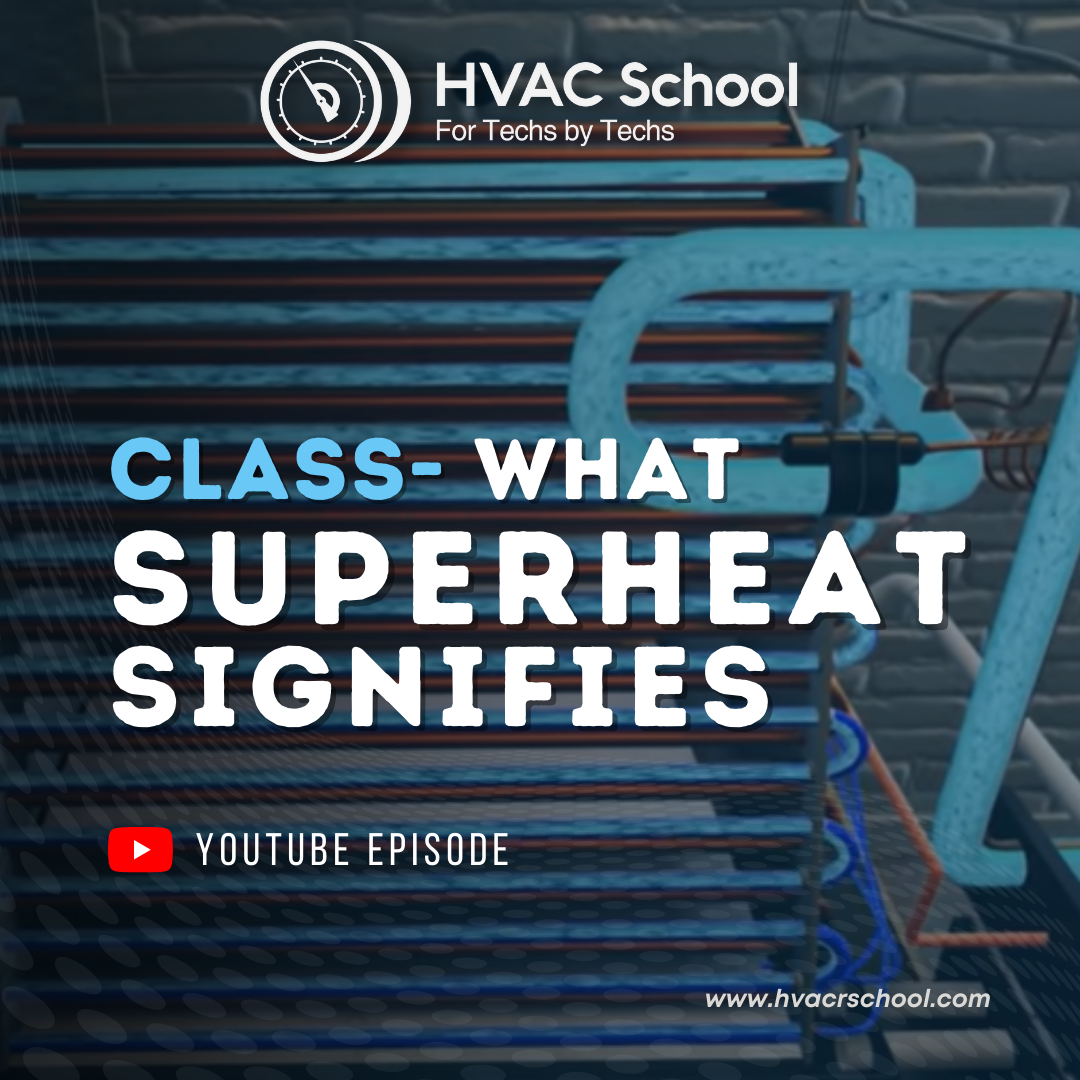Class – What Superheat Signifies
May 25, 2022


Liquid refrigerant goes into the metering device, and there needs to be enough liquid going into the metering device to achieve the desired effects of air conditioning but not so much that it floods the evaporator coil.
We want to know the evaporation temperature (the temperature at which the refrigerant boils), which we can determine with P-T charts or apps like the Danfoss Ref Tools app. A cold evaporator coil is desirable for moisture removal, but an evaporator coil that gets too cold may freeze.
We also don’t want the coil to get too cold because it could negatively affect the compression ratio by dropping the suction pressure. A cooler, lower-pressure vapor is less dense than a warmer, higher-pressure vapor, and the compressor has to do more work to raise that vapor’s temperature and pressure with each stroke or oscillation. So, you’re moving less refrigerant.
As long as a substance is still boiling as a liquid-vapor mixture, it will maintain a constant temperature as heat continues to be added to it; the temperature won’t rise or fall until boiling or condensation has been completed. Refrigerant with a 45-degree evaporation temperature will be 45 degrees as it boils, but it will go higher than 45 degrees once it has completely vaporized. That additional heat is called the superheat.
According to those rules regarding latent heat, it would stand to reason that lower superheat makes for a more efficient evaporator coil; there would be more boiling refrigerant in there. However, low superheat would put a compressor at risk of flooding if the refrigerant were to condense in the suction line. TXVs also have a minimum stable superheat that must be met. So, the efficiency of a lower superheat comes at the expense of increased flooding risk (which can lead to costly failures).
TXVs can set the superheat, and they must be charged by subcooling. However, older piston systems would require the superheat to be set, and you would need to do that with the indoor wet-bulb temperature, outdoor dry-bulb, and a superheat calculator as you charge a system.
If the superheat is too low on a TXV system, that indicates that the TXV is overfeeding the evaporator coil. On the other hand, if the superheat is too high, the TXV is likely underfeeding the evaporator coil. To prevent a failed TXV misdiagnosis, you must check several other things than the superheat; look for temperature drops across the liquid line filter-drier, airflow problems, and improper subcooling. Even when charging a system by subcooling, it helps to be aware of those conditions, the evaporation temperature, and the superheat.
On residential TXV systems, a typical rule of thumb is that the superheat should be 10 +/-5 degrees. The readings can deviate from the rule of thumb depending on things like long line sets and the location of your data point. In some cases, up to 20 degrees of superheat is acceptable in those exceptional cases where we can’t do anything about the system design, even though that may not necessarily be good for the system over the long term.
Comments
Its amazing how many tech’s don’t understand superheat.
Its amazing how many tech’s don’t understand superheat.
It signifies how refrigerant is fed into your evap.high superheat means low refrigerant and vis-vesa
It signifies how refrigerant is fed into your evap.high superheat means low refrigerant and vis-vesa
Great info. and video. Thanks Bryan.
Great info. and video. Thanks Bryan.
To leave a comment, you need to log in.
Log In